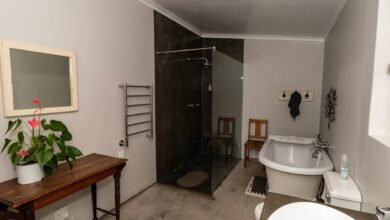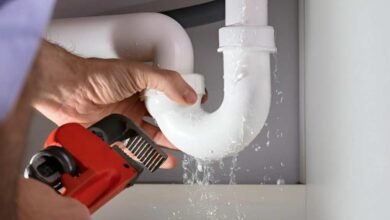From Consultation to Completion: The Trade Masters Approach to Water Heater Installation

Water heater installation may seem straightforward, but the process involves multiple critical steps that ensure safety, efficiency, and long-term functionality. It’s not just about placing a unit in your home—it’s about understanding your needs, evaluating your property, and tailoring the service to align with your specific expectations. One company that embraces this detailed approach is Trade Masters, offering comprehensive service from the first consultation to the final installation. We will explore how their process demonstrates care, planning, and execution across stages.
Instead of rushing through the job or applying a one-size-fits-all model, this approach focuses on precision and communication. Whether replacing an aging system or installing one in a new home, the journey matters. With thoughtful planning, technical consistency, and client engagement, homeowners benefit from a smooth, stress-free experience.
Understanding the Initial Consultation
The first phase of a proper water heater installation begins long before any tools are brought in. The consultation is a cornerstone of the process. It allows homeowners to discuss their water usage habits, learn about energy-efficient options, and express concerns about budget, timing, or household capacity. Trade Masters Construction near Kuna uses this time to gather information such as the number of bathrooms, large appliances requiring hot water, and the client’s preferences between tank and tankless systems. In this stage, communication is crucial.
Rather than recommending the most expensive or popular unit, the team tailors suggestions to match the homeowner’s lifestyle and future needs. Trade Masters, for instance, emphasizes educating clients during this phase, helping them understand what to expect from the process and guiding them through regulatory codes and efficiency standards. This proactive transparency builds trust and ensures that when installation day comes, there are no surprises. Every successful project starts with a conversation, and that conversation is where clarity and trust are built.
Assessing the Property and Selecting the Right System
Once the consultation has shaped a general understanding of the client’s needs, the next step involves evaluating the physical space. Not all homes can support every type of water heater. For example, a tankless unit might be ideal, but the existing plumbing or electrical system may not support it without significant upgrades. A trained installer will assess whether the home can accommodate the system under consideration while meeting building codes and ensuring safety. During this phase, installers will check for adequate ventilation, proper drainage, access to fuel lines, and whether space is available for expansion tanks or auxiliary systems. This is also when recommendations are fine-tuned based on real-world limitations.
Trade Masters is known for integrating practical advice with personalized recommendations, only moving forward when they’re certain the selected unit will function optimally in the home’s environment. This level of evaluation helps homeowners avoid future headaches from mismatched or inefficient systems, ensuring peace of mind and system longevity.
Installation Day: A Systematic and Safe Approach
When the installation day arrives, the project transitions from planning to execution, but that doesn’t mean cutting corners or rushing through tasks. A methodical approach ensures that the new water heater not only works but also works safely and efficiently. The process typically begins with removing the old unit and thoroughly inspecting connections, valves, and exhaust systems. If there are issues such as corrosion, outdated fittings, or damaged insulation, they are addressed before any new components are installed. The new unit is connected from there, and all lines are pressure-tested for leaks or faults.
At this point, electricians and plumbers often coordinate to ensure everything complies with local safety codes. Companies like Trade Masters take great care during this step to protect the client’s investment and guarantee safety. Their crews also take steps to minimize disruption in the home, clean the workspace thoroughly, and verify that everything is working before considering the job complete. It’s about making sure nothing is overlooked, right down to the final screw.
Testing, Client Walkthrough, and Follow-Up Support
After the installation is physically complete, the job still isn’t over. One of the most overlooked but valuable parts of water heater installation is the post-installation testing and customer education. Once the system is up and running, it’s essential to verify that water temperatures are consistent, safety valves are working correctly, and energy outputs are within expected ranges. During this phase, the installer will also walk the client through system operations, such as how to adjust the thermostat, what warning signs to look for, and when to schedule future maintenance.
At Trade Masters, this step includes providing documentation and explaining warranty options. It may seem like a small detail, but walking the client through the system adds long-term value. It gives homeowners confidence in their ability to manage and monitor their equipment, reducing the risk of unexpected failures. Post-installation follow-up is also part of the process—something many providers neglect. A quick phone call or check-in ensures satisfaction and provides an opportunity to catch minor adjustments before they become costly repairs.
Water heater installation is far more than a one-step service—it’s a series of carefully aligned stages determining how well a system will serve a home for years. From consultation and property evaluation to installation and post-service support, every phase contributes to the overall experience and outcome. We have explored how a methodical approach can turn a potentially stressful home upgrade into a smooth, manageable process. Companies like Trade Masters demonstrate how a structured plan, clear communication, and attention to detail can transform the ordinary into truly dependable. In a field where shortcuts are common, a thorough process stands out.




